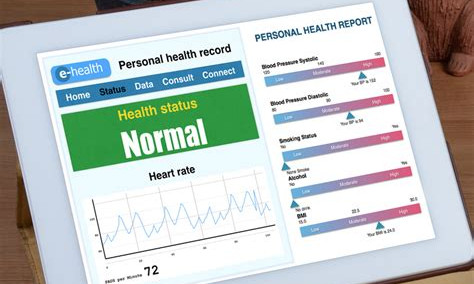Clinicians still struggle to quickly access EHRs at point of care
December 25, 2017
Source: healthcareitnews
 732
732

Computers and workstations on wheels (WoWs) were designed to help clinicians spend less time working from nursing-station desktops and more time at the point of care. The reality, however, is that the ideal has yet to be fully realized. All too often care team workflows remain fragmented because of the need to access patient data and clinical information from multiple disparate systems.
This fragmentation not only breaks down the fundamental human flow of care, but it also leaves patients with the perception the clinician is more focused on the technology than on them.
“There are solutions that help facilitate dialog between clinicians or patients. However, there are multiple factors that contribute to that success,” said Nancy Beale, MSN, RN-BC, vice president of clinical systems and integration at NYU Langone Health Systems.
Some of those factors relate to the complexity of software in use, Beale continued. “If they have to navigate through multiple systems for a single workflow, like an office visit or rounding on a patient, how integrated is the data between systems? Also, what are the form factors they’re using to access those systems? Is their hardware placed in a position to facilitate communication between a patient and physician?”
Some electronic medical records systems still require access through a WoW or desktop, but in recent years more healthcare organizations have been migrating to tablets and smartphones, which appeal to clinicians’ inherently mobile workstyles. In turn, vendors now provide more mobile apps that integrate with the EHR and other clinical communications systems, such as patient monitoring devices, alerts and nurse call. The goal is to consolidate myriad hard and soft functionalities on one device, so caregivers can return to a natural workflow.
However, some organizations’ mobile rollouts have been bumpy, and adoption rates are below expectations. This is especially true when clinicians are not included in IT discussions that impact them, or they aren’t adequately trained on the chosen solution. Additionally, deploying mobile technologies that still rely on disparate systems can slow the time spent documenting or retrieving relevant patient data because the clinician must open and close multiple apps that aren’t unified into one communications platform.
Lighter options that carry more data heft
One reason clinicians have been quick to latch on to mobile technologies stems from how they use them in their personal lives. But consumer-grade systems and devices aren’t typically designed for healthcare environments. Everything from hardware and accessories that hold up to infection control protocols to HIPAA-compliant messaging and devices must be considered.
“Being able to use the phone to be fully functional for a workflow without having to add cumbersome pieces that make it heavier and less user friendly is essential to success and adoption,” Beale said. That includes deploying mobile solutions that can take in verbal information as well as map to discrete data within an EHR instead of always requiring the clinician to be the heavy-lifter; that is, forcing the user to manually add or extract data from disparate systems instead of using an integrated solution that includes voice-enabled dictation.
It’s important for healthcare IT teams to deploy and continually manage applications within a mobile device for greater usability and security. As such, a best practice is to ensure data is never stored on the device to prevent potential patient privacy violations. It’s also important to perform usability testing with clinical end users and partner tightly with all stakeholders.
Keep it simple; keep it ‘app’ropriate
Simplicity and thoughtful integration are important. It makes little sense to encourage clinicians to swap their so-called fat tool belts for slimmer tablets and phones requiring just as many apps. “In the long term, you want clinicians not to have to navigate between multiple systems,” Beale said.
Reducing the number and size of form factors and unifying myriad applications often yields more efficient communications, collaboration and coordinated care. Providers spend less time adding or extracting data from EHRs and more time talking with patients and families. When well implemented, this more unified mobile clinical-communication approach repairs previously fragmented clinical workflows – and makes for a better patient experience.
By DduRead more on
- Things to Know before Buying Newborn Baby Incubators March 31, 2022
- Highly Resistant Food Poisoning Bug Responds to Antibiotics September 6, 2018
- Smartphone Based Diagnosis to Identify Mosquitoes Transmitting Infection September 5, 2018
- 3 Natural Plant Extracts Manufacturers on Drugdu.com September 4, 2018
- Shenzhen Chuanggan – Health Assessment Facility Supplier September 4, 2018
your submission has already been received.
OK
Subscribe
Please enter a valid Email address!
Submit
The most relevant industry news & insight will be sent to you every two weeks.



